Turn 500K Downloads Into App Revenue: A Definitive Guide
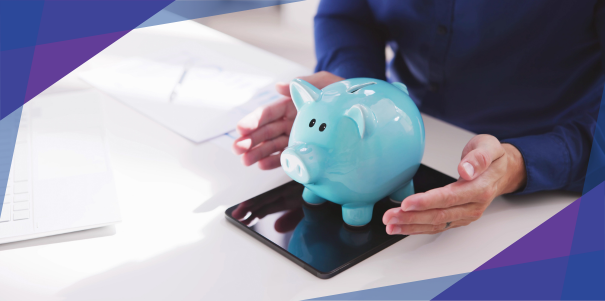
ChatGPT garnered 500,000 downloads in its first 6 days of going live.
Impressive, right? But does that mean the rest of us who miss the 500k mark won’t stand a chance in reaching our goals?
Though 500k downloads is an impressive number, it doesn’t guarantee app revenue. Download stats are just a piece of the entire app-income jigsaw puzzle.
Read on to learn the factors that affect long-term revenues from apps. This guide also gives insights on how to reach 500k downloads, in case you need the financial leeway to start an app business or create digital solutions for social impact.
But before we delve into the topics above, let me first answer two burning questions:
- Does 500k downloads guarantee app revenue?
- Do I need to reach 500k downloads to generate reasonable app revenue?
Does 500k downloads guarantee app revenue?
Though having 500,000 users download your mobile app improves the chances of generating app income, actual revenue does not rely solely on the number of downloads. For instance, having a user base this big translates to a more attractive platform for advertisers, potentially leading to higher ad rates and more ad inventory. In other words, you can earn more from in-app advertising if you have 500,000 users or more.
Do I need to reach 500k downloads to generate reasonable app revenue?
Whether or not you need to reach 500k downloads depends on factors like your app monetization model, user retention strategies, and target platform (Android or iOS). More or less, though, you don’t absolutely need 500k downloads to generate reasonable app revenue—if you get the factors right.
3 Factors that Affect App Revenue
Our app developers and product strategists have designed, developed, and managed apps for various clients. With their extensive experience, they know that the following factors have more bearing on app revenue than 500k downloads:
- App monetization model
- User retention strategies
- Target platform
Factor 1: App monetization model
App monetization is the method of turning your app into an income-generating asset.
There are many ways to earn money from your app. The most common ones are:
- In-app purchase model
- In-app subscription model
- Paid app model
- In-app advertising model
- Hybrid model
In-app purchase model
The in-app purchase model allows users to download an app for free and purchase items or services within the app, such as virtual goods or premium features. This model is popular among e-commerce and gaming apps, where users can buy items to enhance their experience.
To be successful, the app must attract a large number of users and effectively engage them. Though this model expands user reach, it requires substantial user engagement to generate significant revenue.
In-app subscription model
The in-app subscription model, also known as freemium, provides users with limited free access and charges for premium features or full access.
This model is effective for apps that offer continuous value, such as content or service-based apps.
It can help build a broad user base and create a predictable revenue stream. However, the competition is fierce, and conversion rates can be low, making it essential to offer compelling value to users.
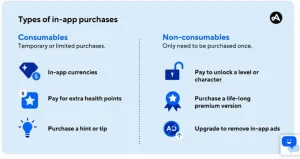
Source: Adjust.com
Paid app model
The paid app model requires users to pay a one-time fee to download the app.
This model is often used by apps offering exclusive content or services, such as streaming platforms. It provides immediate revenue and a potentially better user experience free from ads. However, convincing users to pay upfront can be challenging, especially with the abundance of free alternatives. The paid app model may also result in slower user acquisition.
A purely paid app model is not financially sustainable because once users pay the one-time fee, the app no longer generates income. This method of earning app revenue can only work if the company that developed the app can always attract new users.
In-app advertising model
The in-app advertising model generates revenue by displaying ads within the app.
Among the many types of advertisements within mobile applications include banner ads, video ads, and interstitial ads.
This model is relatively easy to implement and has a high-income potential. If a lot of people downloaded your app, you could generate a decent amount of ad revenue. Industry observers estimate each download brings in around $1.79. However, in-app advertising can disrupt the user experience, potentially leading to higher uninstall rates.
That’s why the right ad placement and frequency, along with relevance, is key to effectively leveraging this app monetization model. Check out our guide on driving revenue through mobile ads to maximize the benefits of the in-app advertising model.
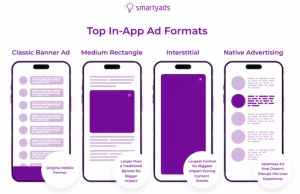
Source: SmartyAds
Hybrid app monetization model
The hybrid model combines multiple monetization strategies, such as in-app purchases, subscriptions, and advertising, to maximize revenue potential.
This approach offers flexibility and diversification of income streams, reducing the risk associated with relying on a single revenue source. However, it requires careful balancing.
The ideal hybrid model must avoid overwhelming users in its pursuit of leveraging multiple revenue channels.
These are just some of the ways you can earn from your app. To delve deeper into this subject, our article on five proven mobile app monetization models provides more detailed insights.
Factor 2: User retention strategies
What good are 500k downloads if a sizeable chunk of your users drop your app within a month?
Unfortunately, this is a harsh reality that many app businesses and developers face.
Studies show that around 36% of app users delete their mobile applications within 30 days.
Which brings me to a vital point:
As you pursue your goal of 500k downloads (more or less), you must also apply tried-and-tested strategies to keep your users interested in your app.
Maintaining interest in your app is synonymous with user retention. The more interested users you have, the more income your app generates.
That said, user retention boils down to two things:
- Improving your app’s user experience
- Reminding users that your app exists.
Improving your app’s user experience
Enhancing the user experience simply means ensuring that people enjoy using your app. And you can foster this enjoyment by working hard to make sure that your app:
- Addresses a valid pain point. Are you sure your travel app helps people find the bookings they love? Or is it helping them find the bookings you love? Though you have a vision for your app, you must ensure that this vision serves an actual market need. This is where the fine art of developing an app idea comes into play.
- Has a well-designed interface. When people use your apps, do they know if they’ve completed an action? Are they seeing the buttons they need, when they need them? Are your users finding crucial information quickly in your app? These and other app interface design principles are important to make sure your users keep coming back for more.
- Leverages automation to improve customer experience. You don’t always need to move a finger to effectively address customer concerns or help users learn more about your offerings. To respond to user needs more quickly and cost-effectively, leverage customer experience automation (CXA) techniques like creating FAQ (Frequently Asked Questions) content and enabling virtual try-ons.
One of our clients, MyDeal, incorporated an FAQ element when they enlisted our expertise to develop their marketplace app. This CXA component contains a vast library of questions and answers that users can refer to when encountering problems with the app. With CXA, MyDeal can respond immediately to user queries while streamlining its customer support operations.
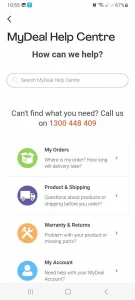
Source: MyDeal Mobile App
Have a look at how app development can expand your operations by reading the MyDeal case study.
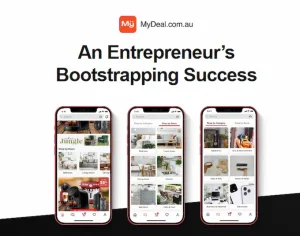
Reminding users that your app exists
As crucial to creating value is communicating it.
Your users must be reminded that your app is well-designed, easy to use, and valuable.
Studies back up the need for communicating your app’s value. In 2023, the average American phone user had around 18 apps. People in other countries could have more.
However you look at it, competition for app users’ attention is intense. That’s why you need to leverage the following to make sure your app stays top of mind in your users’ consciousness:
- Push notifications. Brief messages that pop up at designated times on electronic devices like smartphones or laptops. They aim to capture users’ attention, deliver reminders, provide essential updates, or promote content.
- In-app messaging. Alerts that users receive while within their apps. Their purpose mostly mirrors that of push notifications, though the latter appears even when people close their apps.
To better leverage these two tools, check out our article on push notifications and our guide to in-app messaging.
Factor 3: Target platform
Is your app built for Android or iOS?
Whichever platform you choose to target, this will impact how necessary 500k downloads are to maximize app revenue.
As you may have heard, the Apple App Store and the Google Play Store are home to most of the world’s iOS and Android apps, respectively. Despite their common dominance of the world’s mobile app market, each app store differs significantly in terms of total income and estimated number of downloads.
The mobile apps on the Apple App Store collectively earned around twice as much as their Play Store counterparts. And yet, given the global dominance of the Android operating system, Play Store has a higher number of projected downloads than the App Store.
So what does this all tell you?
The App Store earned more money despite having fewer total downloads.
Therefore:
Reaching the 500k download milestone is less important for iOS apps than for their Android counterparts because the typical iOS user spends more money on apps.
As you can see, multiple factors other than 500k downloads impact app revenue.
However, garnering this many downloads or installs is not always a meaningless goal.
After all, having as many users as possible provides a wide financial safety net to ensure a healthy income from your app while having enough funds to shoulder app maintenance costs. That’s why I will discuss how you can achieve this milestone in the next section.
5 Tips to Achieve 500k Downloads
Convincing 500,000 users to download your app can seem difficult and expensive.
But through an optimized and targeted strategy, you can get more app revenue for every marketing dollar you spend. Here are some tips to save time and resources when conducting marketing campaigns to increase app downloads:
Tip 1: Align your monetization strategy with cost of acquisition
For a more cost-effective campaign, build your app monetization strategy around your desired customer acquisition cost (CAC).
CAC measures the average cost of convincing a person to download your app.
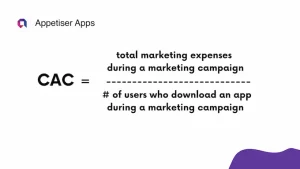
To better illustrate CAC, let’s look at an example. Let’s assume you spent $10,000 on a Facebook ad and you were able to get 100 users to download your app from that one campaign. Your CAC for that campaign would have been $100.
Once you’ve determined your CAC, figure out how your app will make money. Will it earn money through ads? Will it run on a freemium model, or will it be a paid app? Whatever monetization model you choose, make sure your projected app revenue can cover your target CAC.
Tip 2: Track and measure campaigns
Before you start any app download campaign, you want to make sure that you can track and measure it.
Simply put, tracking campaigns allows you to find out where your app downloads are coming from. Is it through Facebook, Google, or other ad networks? You can be more granular and track results by campaign name and even by the actions taken by the customer on the site.
When we launch an app, we try to track everything—from every button to every banner. While this may be a lot of work, it will give you a wealth of information about your users’ behavior.
The more information you have, the more effectively you can convince people to download your app. By understanding the metrics you track on platforms like Google Analytics, you’ll be able to measure how effective your campaign is and make the correct incremental changes to obtain more app users or spend less for the same result.
Source: Google Analytics on YouTube
If you’re not fluent in data and analytics, I suggest learning before implementing app download campaigns.
You can learn through free or paid online courses. But the best-case scenario is to have a mentor, someone who is willing to light your path and give you direction.
Your company might just need a little push to gain momentum. Start with baby steps by booking a free consultation with us. Learn how our product strategists can propel your business in the digital age.
Tip 3: Always be testing
Testing is comparing different versions of an ad to measure performance differences and see which works better for your app download campaign.
Through regular testing, you can devise the best combination of copy, ad creative, app landing page, and other marketing materials to convince users to download your app.
When testing, always seek to answer a question. In other words, ask yourself: Will any campaign changes increase conversion rate? Will marketing experiments lead to more economical conversions? Do changes tie into the app’s monetization strategy?
Now how can you find answers to these questions?
One possible course of action you can undertake is testing your ads on Facebook, Google, and one major ad network. You can check which channels provide more results for less marketing dollars.
Now if you discover that Facebook is the best channel for your campaign, focus on this social network and continue to test and validate a mix of ad creatives, target audiences, and landing pages. Regular testing in this context can help you determine which combination provides the best return on ad spend (ROAS).
ROAS is a metric that measures the effectiveness of a digital marketing campaign. It helps you determine how much money your app earns for every dollar you spend on advertising the app to increase downloads.
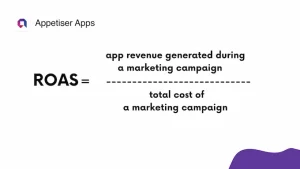
Our product strategists recommend allocating a maximum of 15% of your advertising budget to campaign testing. Once you’ve created a successful app download campaign, use the rest of your budget to scale up.
Testing will inform you of the best mix of elements to wisely spend your budget on and ensure that you get the best possible return.
Tip 4 – Align product, ad, and audience
When preparing for a campaign, figure out who your target audience is.
Come up with personas of your ideal users to get a clear idea of who you should be targeting, what you want to tell them, and what content you want to show them.
Remember the tip I gave about testing? A perfect campaign doesn’t exist since you will continue to test and optimize so you can align your campaign with your audience. But despite the elusiveness of the ideal campaign, regularly checking campaign-audience alignment is not futile because it brings you closer to the holy grails of optimal results and cost-effectiveness.
If you find out that the type of user attracted to your ads isn’t part of your defined target audience, you can opt to pivot. But before you modify your approach, you need to make sure that your app aligns with this new direction.
For example, let’s assume your app is designed for baby boomers. However, you pivoted your ad campaign to attract millennials without changing your app’s design and features.
Your ad works well and you obtain the lowest CAC since you started. However, you discover later that millennials download the app but quickly uninstall it because the app’s appearance and functionality do not appeal to them.
Simply put, make sure there is consistency between your app’s target audience, ads, and design.
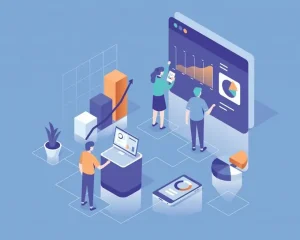
Tip 5: Use data to strategize
When you run an ad and obtain a certain number of downloads, you can collect data from the newly acquired users. You can even categorize them into audience types.
Tracking every action plays an important role in learning about your users. Where in the customer journey do users make a purchase? Are you able to retarget them to use your app more? These are all questions you can learn by analyzing the information you can find on Google Analytics’ dashboards.
User data works well with effective app marketing strategies to ensure that your app gets a warm reception from people who are just learning about your digital solution.
Beyond downloads and app revenue
Whether you’re aiming for 500k downloads or seeking to generate revenue from your app, both are worthy goals as long as your application provides quality customer service or enhances the user experience. Download milestones can also be adjusted depending on your monetization model, target audience, and target platform.
Whether you already have an app or are envisioning one, it can be challenging to consider all these factors at once. Setting up milestones for downloads and app revenue can feel like shooting in the dark or walking blind, especially in an intensely competitive app market.
So where do you go from here?
You find a partner who understands the technology landscape, a partner who knows how to build your confidence and enhance your organization through digital solutions.
With our help at Appetiser, you won’t just build apps. You will have access to the right information and mentorship so you will know how to acquire funding, get your app running, and maintain your app’s financial sustainability.
The quest for maximum impact starts with one simple act. Book a free consultation now and learn about the exciting possibilities that await you in the future.

Jesus Carmelo Arguelles, aka Mel, is a Content Marketing Specialist by profession. Though he holds a bachelor’s degree in business administration, he also took courses in fields like computer troubleshooting and data analytics. He also has a wealth of experience in content writing, marketing, education, and customer support.


